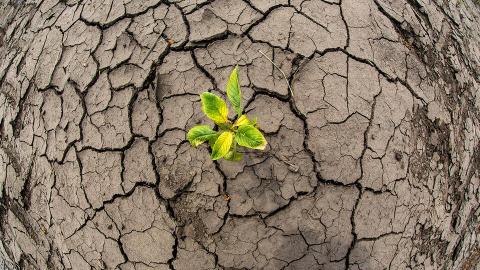Weather and climate can contribute to civil unrest, especially in countries with little to no social safety nets, where people depend on subsistence farming to feed themselves and their families. The question is, can civil unrest be predicted along with the weather?
To begin answering that question, researchers at the National Drought Mitigation Center, based in the University of Nebraska–Lincoln’s School of Natural Resources, received $1 million in funding from U.S. Air Force Weather this spring for the first phase of a bigger project.
The project, “Building a Global Composite Drought Indicator Hot Spot Early Warning and Information System,” is led by DWFI Faculty Fellow Mark Svoboda, director of the drought center. It began in March. The center is teaming up with others on campus, including Ross Miller, associate professor of political science; Tirthankar Roy, assistant professor of civil and environmental engineering; and Brian Wardlow, director of the Center for Advanced Land Management Information Technologies.
In the first phase of work, the drought center will develop a global composite drought indicator, based on physical measurements of water availability such as precipitation, soil moisture, evapotranspiration and vegetation health. The center has extensive experience working with countries around the globe to construct composite drought indices, based on which data is available and which sectors are most vulnerable. Socioeconomic indicators that describe vulnerability to drought will be incorporated as a next step. Machine learning techniques will help guide the team, along with feedback from key partners within the Air Force.
“Using multiple data sources and adapting to whatever is available for a country or region is consistent with the ‘convergence of evidence’ approach that the U.S. Drought Monitor is based on,” Svoboda said. “A key difference here, besides generating an operational global product for the first time, is that we may have to use remote-sensing data for countries that don’t have enough on-the-ground weather stations, or in countries where they don’t share data freely. We may also need to use innovative methods to come up with drought assessments in areas where the period of record is short or nonexistent. Drought is always a comparison to some normal, and there are places where we don’t have enough data to say what is normal.”
Svoboda said the next stage of work will be expanding to include more partners and examine more drought hotspots.
Photo Credit: Craig Chandler | University Communication

